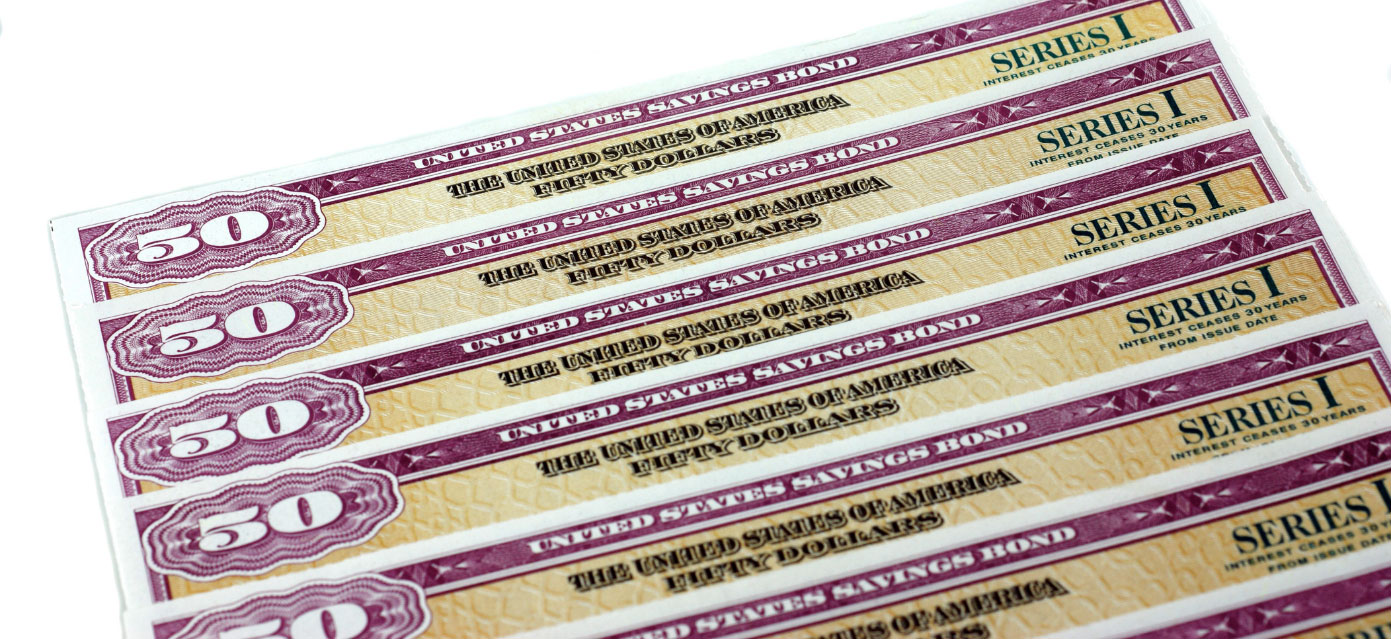
A Series I Saving Bond can help outpace inflation and supplement your retirement income, with potential tax benefits if used for higher education.
A Series I Saving Bond can help outpace inflation and supplement your retirement income – and there may be tax benefits for you.
You’ve likely heard how inflation is rising at a rapid pace – so how can your savings keep up? Inflation is a decrease in your purchasing power, and an increase in the cost of goods and services in the economy over a period of time. Economists measure inflation using the inflation rate, which the annual inflation rate for the United States is 8.5% for the 12 months ending in March 2022, which is the highest since December 1981, says the U.S. Department of Labor.
Over time, inflation can reduce the value of your savings. When inflation rises, saving options with fixed, long-term cash flows tend to not perform as well over time. On the flip side, assets with adjustable cash flows typically keep pace, or even outpace, the rate of inflation. One of these assets to help keep pace with inflation are Series I Savings Bonds, or called “I Bonds.” Here’s how an I bond can help combat inflation and keep your savings on track.
What are I Bonds
According the Treasury Department, I bonds are a savings bond that earns interest based on combining a fixed rate and an inflation rate. The fixed rate stays the same for the life of the bond, and the inflation rate is set twice a year. For bonds issued from November 2021 through April 2022, the combined rate is 7.12%. Interest is earned on the bond every month, and is compounded semi-annually.
-
When I bonds mature
I bonds have a full maturity of 30 years – there’s an original 20-year maturity period, followed by a 10-year extended maturity period. I bonds earn interest for 30 years unless you cash them first, which you can cash them after one year. To get the full interest due, you must keep the bond for five years. If you cash out before five years, you’ll lose the previous three months of interest. For example, if you have an I bond for 18 months and decide to cash out, you’ll keep the first 15 months of interest earned. After the five years, there is no penalty for cashing out the bonds.
-
How I bonds are taxed
I bonds are taxed at the Federal income level, however, they are not taxed at the state and local level. If you use the money for higher education purposes, this may affect what you pay on federal income tax on interest. See Tax Considerations for I bonds on the Treasury’s website for specific tax information.
Benefits of I Bonds
-
I bonds are a safer investment
the interest rate cannot go below zero, and the redemption value of these bonds won’t decline. When prices rise in the economy, it takes away from how powerful your dollar is. Therefore, the money in your pocket is worth less, since it requires more money to purchase goods and services. I bonds can help maintain the value of your investment. In addition, there’s little risk of default on securities offered by the U.S. Treasury.
-
Tax benefits to using I bonds to finance education
Under the Education Savings Bond Program, you may be able to completely or partially exclude savings bond interest from Federal income tax. According to the Treasury Department, this can occur when you pay qualified higher education expenses at an eligible institution or state tuition plan in the same calendar year you redeem eligible I bonds and EE bonds issued January 1990 and later. View the Tax Benefits for Education on the IRS website for more information.
Purchasing an I Bond
You can purchase an I bond electronically on the U.S. Treasury website, or purchase a paper bond when filing a federal income tax return:
- Minimum purchase for electronic: $25
- Maximum Purchase for electronic: $10,000
- Minimum purchase for paper: $50
- Maximum Purchase for paper: $5,000
Electronic I bonds are available in any denomination amount – down to the penny – between $25 to $10,000. Paper I bonds are available in amounts of $50, $100, $200, $500, and $1,000.
Visit the Treasury’s website to purchase an I bond, as well as other securities. If you purchase I bonds electronically, you can manage and see the value by logging into your TreasuryDirect account.
For more information about I Bonds, go to: https://www.treasurydirect.gov/.
This material is for informational purposes only. It’s not intended to be relied upon as a forecast, research or investment advice, and is not a recommendation, offer or solicitation to buy or sell any specific security. Neither LPL Financial, not its registered representatives, offer tax or legal advice. Always consult a qualified tax advisor for information as to how taxes may affect your particular situation.
Category: Investing
